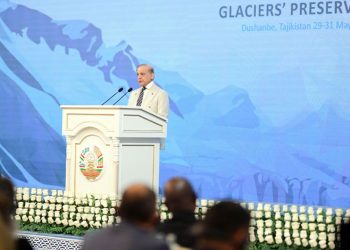On Wednesday, the city experienced nearly 290mm of rain in 10 hours, breaking a 30-year-old record, according to Commissioner Lahore Mohammad Ali Randhawa.
The city received 291mm of rain, with more than a dozen regions receiving more than 200mm, according to the official, who added that this is attributable to climate change and powerful monsoons.
He stated that the city government, as well as the officers and workers of the Water and Sanitation Authority (Wasa) Lahore, are fully mobilized to ensure rainfall drainage.
“Earlier this year, Lahore received the maximum rainfall of 256 mm on June 26th, while in 2022, 238mm of rain was recorded in Lahore,” Randhawa said.
The commissioner stated that Lahore received 288mm of rain in 2018, adding that the city has not received so much rain in such a short period of time in the previous 30 years.
Meanwhile, MD Wasa Ghafran Ahmed stated that if the rain stops, all low-lying areas would be cleaned within a few hours.
Lakshmi Chowk in the city received 259mm of rain, Nishter Town 258mm, Gulshan-e-Ravi 251mm, Johar Town 250mm, Qurtaba Chowk 241mm, Tajpura 238mm, Pana Wala Talab 222mm, and Iqbal Town 221mm, according to Wasa.
The rainstorm, which began earlier in the morning, rendered the city immobile, since all major roads and connecting streets were flooded, making commuting difficult. Due to knee-deep water on the highways, many automobiles broke down.
Rainwater entered the houses in low-lying areas of Shah Jamal and Tajpura while the electricity supply was cut, making life more miserable.
CM visits city
According to Punjab Chief Minister Mohsin Naqvi, record-breaking rains triggered urban floods, while the canal overflowed following heavy rains.
“All cabinet members and administration are on the ground clearing the water.” “I am also constantly monitoring the situation on the ground and receiving updates from all over Lahore,” the chief minister said during a visit to the city to oversee relief efforts.
Last week, Pakistan Meteorological Department (PMD) warned that moist currents from the Arabian Sea are likely to penetrate in upper parts of the country, and a westerly wave was also likely to enter the upper parts of the country on Monday, causing heavy rainfall from July 4 to 7 across the country.






